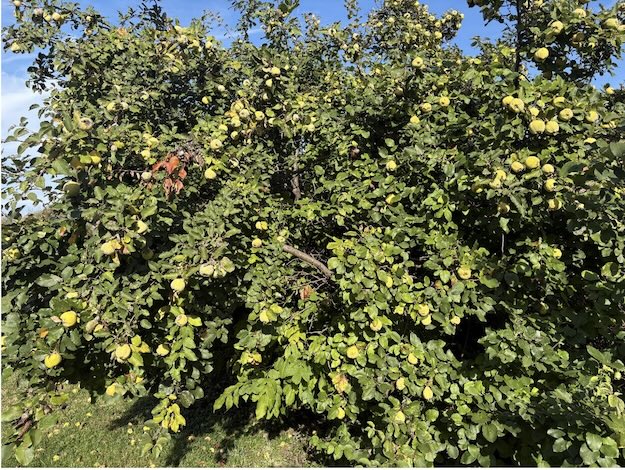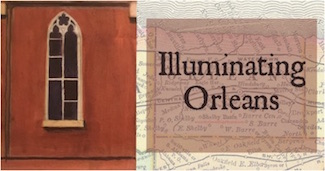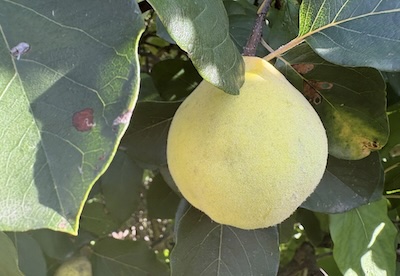Quince trees were once very popular in Orleans County

Photographs courtesy of Tom Wenhold: A quince tree in full glory on Route 18 in the Town of Yates.
By Catherine Cooper, Orleans County Historian
“Illuminating Orleans” – Volume 5, No. 38

Quince trees were cultivated in Orleans County orchards for many years but have become less common.
The October 6, 1847, Orleans Republican carried an ad from the N. Spicer & Son Nursery at Kendall Corners advertising quince trees for sale.
A fruit orchard “near the Knowlesville depot” which was offered for sale in March 1875, included a quince orchard of 100 trees.
The quince crop of 1883 was unusually large. About 4,000 barrels shipped from Albion at $3.50 per barrel.
In the 1970s, the Brown farm in Waterport grew 55 acres of quince, “the largest acreage of quince on one farm in the U.S.” according to a Journal-Register article.

A ripening quince in sunlight.
A quince resembles a cross between an apple and a pear and emits a lemony aroma. The fruit is hard even when ripe and cannot be eaten out of hand when picked, but must be stewed, candied or jellied to make it palatable. It turns a lovely rosy hue when cooked. It has a high pectin content and was used to make jelly and marmalade. It is high in Vitamin C and antioxidants.
Here is a recipe for a Quince Pie from the “Queen of the Household” cookbook published in 1891: Pare, slice and stew 6 quinces till soft, then press through a sieve. Add to this 1-pint milk and 4 well beaten eggs. Sweeten to taste. Bake in a bottom crust ¾ hour in a moderate oven.
Another recipe in the book is for “Quince Cheese,” which is quince marmalade boiled down very thick. “It will turn out as firm as cheese and can be cut into slices.” No doubt this was the origin of the “slices of quince” mentioned in that wonderful nonsense poem by Edward Lear, “The Owl and the Pussycat.”
“They dined on mince and slices of quince
Which they ate with a runcible spoon.”





























































